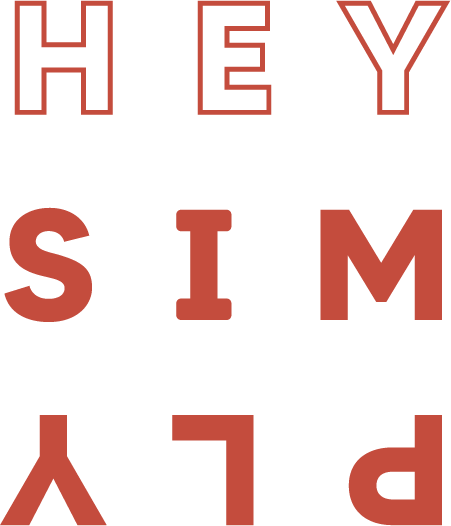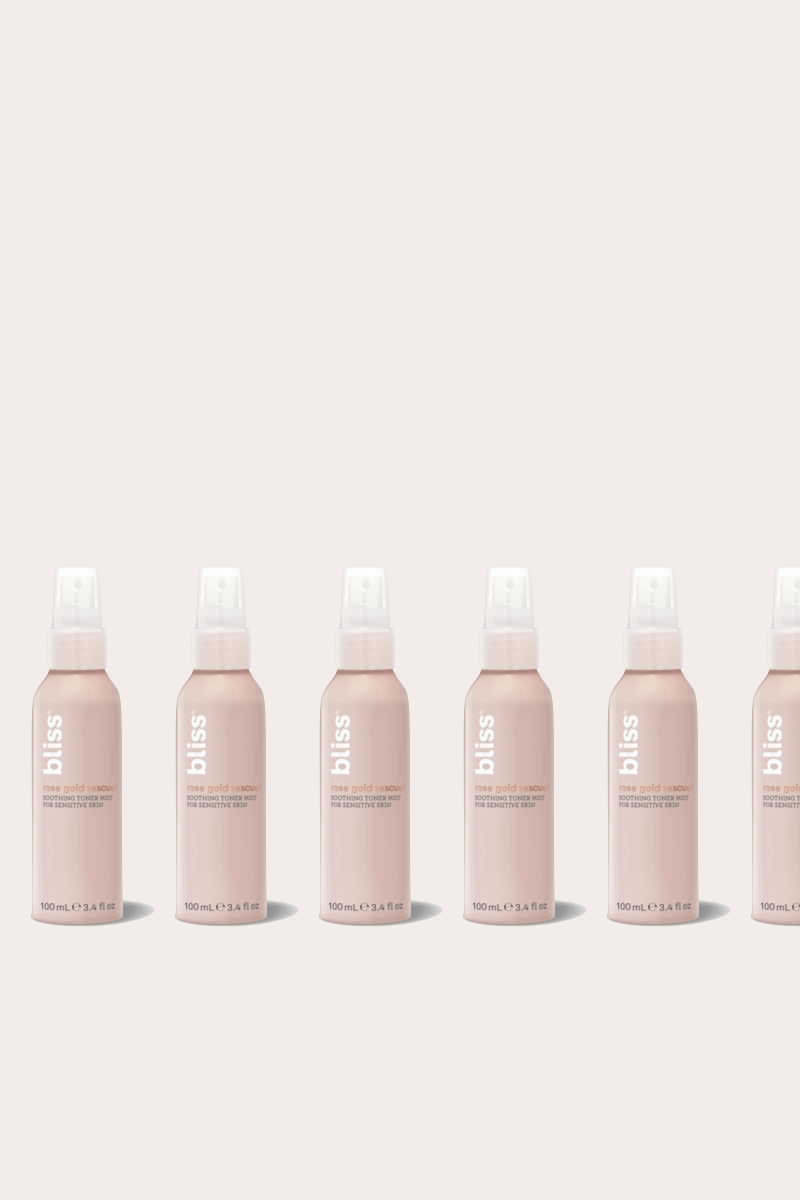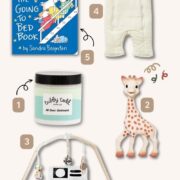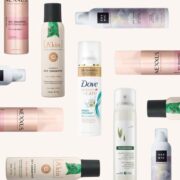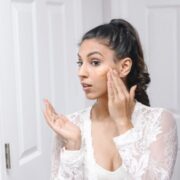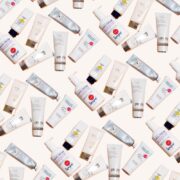So you’ve heard about retinol, and you think it’s about time that you start to incorporate it into your skincare routine? Great! You’ve come to the right place.
This is the complete beginner’s guide to retinol and I’ll walk you through everything that you need to know. Is it a lot? Yes. Is it interesting? I think so!
Should you know this? Absolutely. Let’s get started.
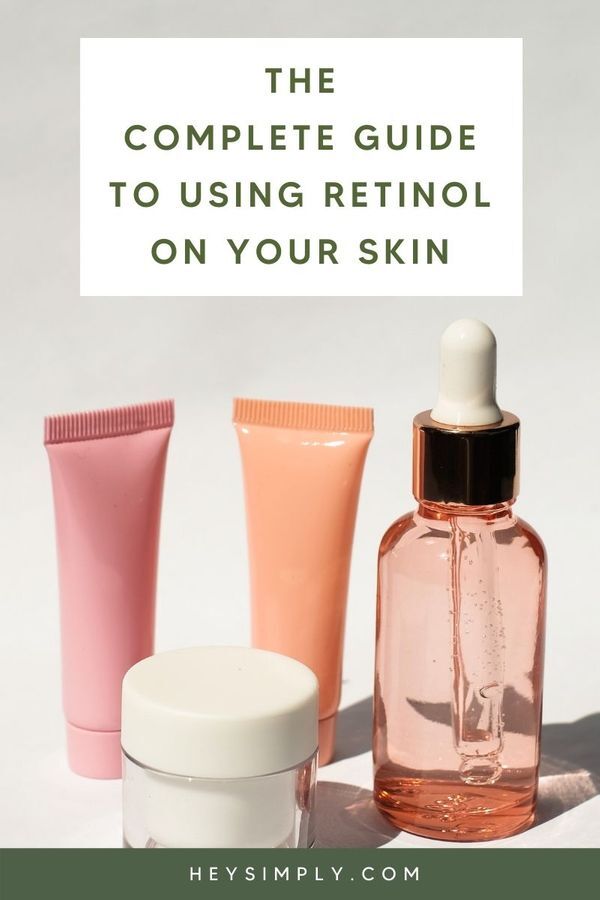
- What Is Retinol?
- How Do Retinoids Work?
- Benefits of Retinol (What Does Vitamin A Do?)
- What Are The Side Effects Of Retinoids?
- Who Should Use Retinol?
- Which Retinoid Should A Beginner Use?
- How to use Retinol?
- When Should I Apply Retinol?
- How Long Does Retinol Take to Work?
- Final Thoughts On The Ultimate Guide To Retinol
What Is Retinol?
Retinol is often regarded as “the holy grail” of skincare ingredients. It’s a derivative of Vitamin A that has a myriad of benefits including boosting cell turnover and skin cell rejuvenation – which is key for anti-aging.
The first thing you need to know is that you’ll often hear the word “retinol” and “retinoid” are often used interchangeably, but they aren’t the same thing. This is the “all thumbs are fingers, but all fingers aren’t thumbs” kinda thing. All retinol are retinoids, but not all retinoids are retinol. Are you still with me?
What Are The Types Of Retinol Or Retinoids?
Retinoid is a general term for the entire family of Vitamin A derivatives that includes both prescription and OTC products. Here are some of the different types of retinoids:
- Retinol
- Adapalene
- Tretinoin
- Tazarotene
- Trifaro
- Isotretinoin
- Retinoldehyde
- Retinol esters
Retinol on the other hand is a very specific type of retinoid. It’s what dermatologists and estheticians recommend for anti-aging because of the research behind it.
So which one should you use? For that, you need to understand how retinoids penetrate the skin.
How Do Retinoids Work?
Basically, all Vitamin A formulas begin as Retinol Esters and are converted to Retinol then to Retinaldehyde and then to Retinoic Acid. Prescription-strength retinoids are pure retinoic acid and when applied to the skin will start working right away, but often with more risk of side effects.
How are retinol and other retinoids different?
Over the counter retinol formulas have to be converted to retinoic acid via your skin. The conversion can take time but usually allows for the skin to become accustomed to the formula and therefore less chance of irritation.
Plus, the longer the conversion process from retinol esters to retinoic acid, the lower the concentration of the active ingredient. Retinoic acid is one of those situations where less is more.
Benefits of Retinol (What Does Vitamin A Do?)
Vitamin A is naturally produced in your body but decreases as you age. Remember this post about cell turnover as you age? This is why babies have such smooth skin and older adults face issues with skin elasticity and wrinkles. The science behind it is fascinating. I mean, I wrote the post so I’m biased, but still.
Retinoids in general help your body boost cell turnover, increase collagen production, and can help with acne.
Retinol specifically can significantly improve wrinkles, sun damage, fade hyperpigmentation, improve skin elasticity, and help with skin texture.
What Are The Side Effects Of Retinoids?
Retinoids have multiple sides effects and will vary depending on the user and the formulation. Common side effects are irritation, redness, sun sensitivity, and skin drying.
Related: How To Start a Skincare Routine For Beginners
Who Should Use Retinol?
The most popular reason people add retinol to their routine is to reap the anti-aging benefits retinol provides. Gentle to moderate retinoids are employed for this use.
Another common use for retinol is as an acne treatment. These are normally retinoids that can be prescribed to you by a dermatologist. They are strong and you need to be very careful while using them.
Although the side effects are there, retinoids are generally safe for use by most.
When should I start using retinol?
Most skincare professionals say that retinol should be introduced into skincare routines for most people in their 20s, usually mid-20s. This is when our skin shows signs of slowing down cell and collagen production. This guide to retinol will address how to keep your skin safe when using retinol.
There are many factors that cause wrinkles and aging and you can’t avoid all of them, so extensive care is key. You can’t escape the sun or stop having facial expressions, but you can add a retinol based product to your routine.
Can Sensitive Skin Use Retinoids?
While every person is different, and no skincare advice is universal – yes. Most dermatologists agree the sensitive skin can be trained to tolerate retinol. As long as it’s introduced and used properly.
Products with retinol esters, mildest type of retinoid is probably the best option for people with sensitive skin. Retinyl Palmitate and Retinyl Propionate are the mildest forms because they require a 3 step conversion before Retinoic Acid is formed.
How to choose a retinol for oily skin?
If you have oily skin you are more likely to have an easy experience with retinol. You might even escape the initial dryness and peeling altogether. Definitely start with a lower concentration of retinol, you can get away with 1% concentration (you don’t have to choose it though) and then slowly work your way up.
Using retinol is especially helpful for people with oily skin because it prevents keratin debris and cells from clumping together and clogging pores.
Retinoids for dry skin
Retinol can cause dry patches and peeling even on normal skin, so those of you with dry skin need to take a few precautionary steps. You need to have a soothing moisturizer on hand to balance out the effects of the retinol. As always, start slow and increase potency as your skin can tolerate.
Can I use retinol while pregnant?
Experts recommend that you stay away from retinol and all other Vitamin A derivatives during your pregnancy. Oral retinoids have been proven to cause birth defects, but there isn’t enough evidence to show that topical application of retinoids have the same adverse effect.
If you’ve been accidentally using retinoids during your pregnancy, take a deep breath and talk to your doctor. Don’t freak out because it is probably okay, but you might have to give up your favorite retinol products for a while.
Which Retinoid Should A Beginner Use?
You want a formula with at least 0.1% retinol, retinyl esters or retinaldehyde. I recommend that unless you have super sensitive skin – you can probably start with 0.5%.
These are great beginner options.
- The Ordinary Retinol 0.5% in Squalane
- Paula’s Choice 0.3%. Retinol + 2% Bakuchiol
- FAB Skin Lab Retinol Serum (0.25%)
Eventually you can work your way up to a stronger formula over time and as you finish your current formulas. I’m currently using a 3% formula from Peter Thomas Roth which took me about 4 years to work my way to.

Shop the Post

How to use Retinol?
Retinol should be introduced to your skin slowly and with caution. The standard recommendation is this:
- For the first two weeks, use retinol once a week. If there is limited skin irritation, up the formula for the next two weeks.
- In the next two weeks, use retinol twice a week. If there is limited skin irritation, up the formula for the next two weeks.
- After four weeks, use retinol every other day. If there is limited skin irritation, you can choose to move to every night or just stick with every other night.
Retinol can be just as effective when used every other night vs every night. I personally use if every other night, even after years of use.
Apply a pea-sized amount to your face and neck after double-cleansing. I usually wash my face at night and apply my retinol. Then I brush my teeth, giving the formula time to be absorbed into my skin, and then moisturize. Don’t forget this step! Always follow up with a heavy moisturizer to prevent skin irritation from retinol. My current favorite is the aqua bomb by belif.
Related: The Art Of The Double Cleanse
When Should I Apply Retinol?
A lot of retinoid ingredients are “photo unstable” – which means that they are unstable in the light and with too much exposure they won’t work. This is why most professionals recommend that retinol be applied to your night-time skincare routine. In fact, using retinol makes your skin more prone to sun damaging effects like burning, wrinkles, and hyperpigmentation so you want to avoid applying it during the day.
Using SPF with Retinol
The most important thing when you start using retinol is SPF. They are a team and honestly SPF is Batman to Retinol’s Robin. I know it doesn’t seem that way sometimes and retinol is the hero of this article, but SPF is the ultimate skincare product.

If this is causing you any concern about using retinol in the there is only one rule, apply SPF and always reapply regularly. Remember, retinol is applied in the evenings and SPF in the mornings.
How Long Does Retinol Take to Work?
Unless you are using a prescription formula (which should still take a few weeks) you need to be patient with most retinol formulas. Retinol affects the skin in deeper layers and will change how your skin cells develop, these changes are happening even if you don’t see it on the surface. The rule of thumb is about 3-6 months or a minimum of twelve weeks before you say that it’s not working for you.
The first few weeks may be rough and patchy. Both your skin and the experience. There are some things you can do to ease the process.
- Use a soothing moisturizer to pair with your retinol.
- Choose hydrating and moisturizing products to use on the other days to enhance your skin’s healing process.
- Go slow and increase or decrease potency based on your skin’s tolerance.
Should You Use Prescription Retinol?
The most common prescription retinol is often known by the brand name Retin-A and is comprised of tretinoin as pure retinoic acid. It doesn’t need to be converted when applied to your skin and generally works more quickly. Skincare professionals estimate that tretinoin is 20 times stronger than an OTC retinol.
Tretinoin has so many anti-aging benefits like tightening loose skin, fading brown spots, and increasing collagen formation – but the side effects are intense too.
Unless you’ve seen a dermatologist, I wouldn’t recommend jumping straight into a prescription retinoid. Plus, it’s kinda expensive in the US.
There are so many great over the counter options available, and I’ll include some of my favorites below.
How To Use Retinol To Treat Acne
Adapalene was formally a prescription-only formula in the US but recently became over the counter. It’s most commonly recommended for treating acne and some say that it’s more effective than tretinoin (prescription retinol) and less irritating. It’s a synthetic retinoid that works by stopping microcomedone formation.
Most over the counter Adapalene formulas come in a gel that has 0.1% Adapalene. Anything over 0.3% will require a prescription. These are a few options for you to try.
Common Retinol Alternative: Bakuchiol
Bakuchiol is commonly regarded as a retinol alternative that has the potential to be a game changer. Bakuchiol is an ingredient found in a babachi plant and has been regarded as a “natural retinol” with less side effects.
There has been one prominent independent clinical study that had 44 people in it who either used 0.5% retinol cream once a day or 0.5% bakuchiol cream twice a day and their results were measured. Those who used retinol had more signs of irritation and similar reduction in wrinkle surface area and hyperpigmentation. Looks promising, but with a small sample size, it’s not ground-breaking.
TLDR; Bakuchiol is a newer formula that scientists are still learning about. There is limited research and evidence to compare the two, but it’s something to keep your eye on. Here’s a budget option from The Inkey List in case you wanted to explore this, but there are other options in this guide to retinol.
Retinol Recommendations For Beginners
- Best Budget Option (2%) – The Ordinary
- Best High-Potency (what I use) – Peter Thomas Roth
- Best Low-Potency (great for beginners) – First Aid Beauty
- Best Standard Formula for Teens – La Rosche Posay
- Best Drugstore Option – Loreal Retinol Night Serum
- Best Acne Adapalene Formula – Acne Free
- Best Bakuchiol Option – Herbivore Botanicals
Related: How Should You Layer Your Skincare
Final Thoughts On The Ultimate Guide To Retinol
Overall, there is so much to know and learn when it comes to retinoids. As with all skincare, there is no one size fits all formula – so take the knowledge from this post and continue to do research to find what works for you. Remember, when it comes to retinol – be patient. Don’t jump into high doses or frequency and try to rush results.


